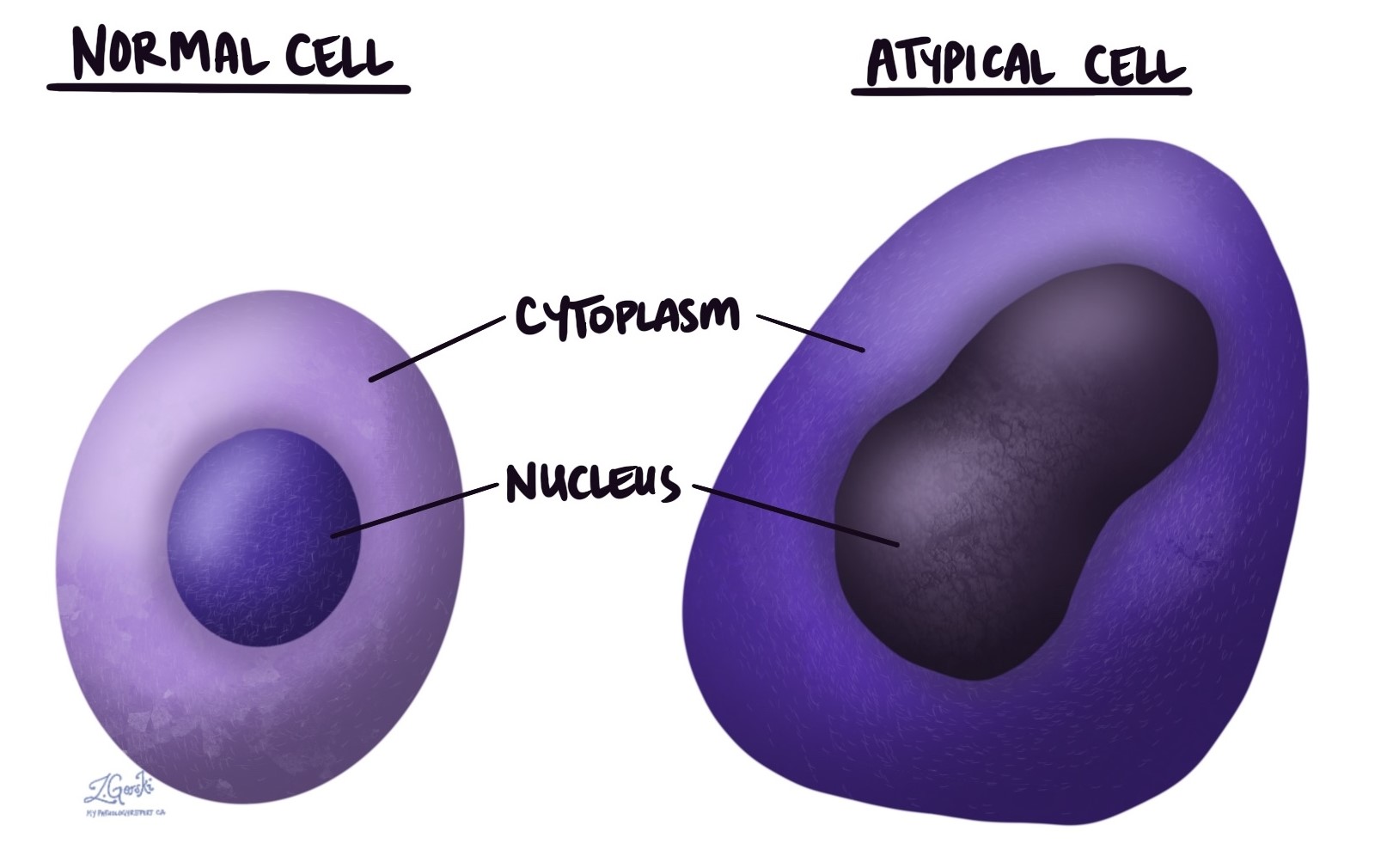MyPathologyReport
December 7, 2023

In pathology, the term atypical is used to describe cells that look abnormal when examined under the microscope. These changes can affect the cytoplasm (body) of the cell or the nucleus (the part of the cell that holds the genetic material).
Does atypical mean cancer?
Atypical does not necessarily mean that the cells are cancerous. Although atypical cells are commonly seen in malignant (cancerous) tumours, this change can be seen in a variety of benign (non-cancerous) conditions. Your pathologist will use this information in combination with the results of other tests to make a final diagnosis.
What causes a cell to look atypical?
There are many reasons why cells may start to look atypical. Common causes include:
- Inflammation – Inflammation is the body’s natural defense against injury or disease. The body also uses inflammation to repair tissue after an injury has taken place. The cells that take part in inflammation are called inflammatory cells and they are part of the body’s immune system. Normal, healthy cells can start to look atypical when they are close to inflammatory cells. In this situation, this change goes away when the inflammation stops.
- Infection – Cells that become infected by a virus can look very atypical. Pathologists sometimes call this type of atypia viral cytopathic effects. The atypical cells will go away once the infection is removed from the body.
- Radiation – Radiation is a common treatment for cancer. Normal, healthy cells that have been exposed to radiation commonly look very atypical when examined under the microscope. Your doctor should always let your pathologist know if you are receiving currently radiation or have received radiation in the past.
- Pre-cancerous diseases – The abnormal cells in most pre-cancerous diseases look atypical when examined under the microscope. Pre-cancerous diseases that show these changes include dysplasia and carcinoma in situ.
- Cancer – Almost all cancers are made up of cells that look atypical compared to the normal, healthy cells around them. In this case, this change is very important because it helps your pathologist make the diagnosis and determine the tumour grade.
It is important to remember that atypical is a description of the way the cells look under the microscope and not a complete diagnosis by itself. In many cases, your pathologist will try to determine the cause of this change. If the cause is known, it will be described in your pathology report. However, your doctors may only be able to determine the cause later with the help of additional information about you and your medical history.
About this article
This article was written by doctors to help you read and understand your pathology report. Contact us if you have questions about this article or your pathology report. For a complete introduction to your pathology report, read this article.

